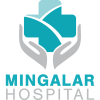Echo or Echocardiography
Echo or Echocardiography is a non-invasive diagnostic test that uses sound waves to produce images of the heart. Here are some benefits of using an Echo:
- Non-invasive: Echo is a non-invasive diagnostic test that does not require any incisions or injections. It is a safe and painless procedure that does not cause any harm to the patient.
- Diagnose heart conditions: Echo is commonly used to diagnose various heart conditions, such as heart valve problems, heart muscle weakness, and congenital heart defects. It can also detect heart abnormalities that may not be visible on other imaging techniques.
- Assess heart function: Echo can be used to assess heart function, such as the pumping ability of the heart, the size of the heart chambers, and the blood flow through the heart. This information can help doctors determine the most appropriate treatment options for each patient.
- Monitor treatment progress: Echo can be used to monitor the progress of treatment for heart conditions, such as heart failure. It can detect changes in heart function and provide information about the effectiveness of treatment.
- Personalized treatment: Echo can help doctors develop personalized treatment plans for patients with heart conditions. By identifying the specific location and nature of the heart problem, doctors can determine the most appropriate treatment options for each patient.
Overall, the benefits of Echo make it a valuable tool for medical professionals in diagnosing and treating various heart conditions. Echo is non-invasive, can diagnose heart conditions, assess heart function, monitor treatment progress, and develop personalized treatment plans for patients.

